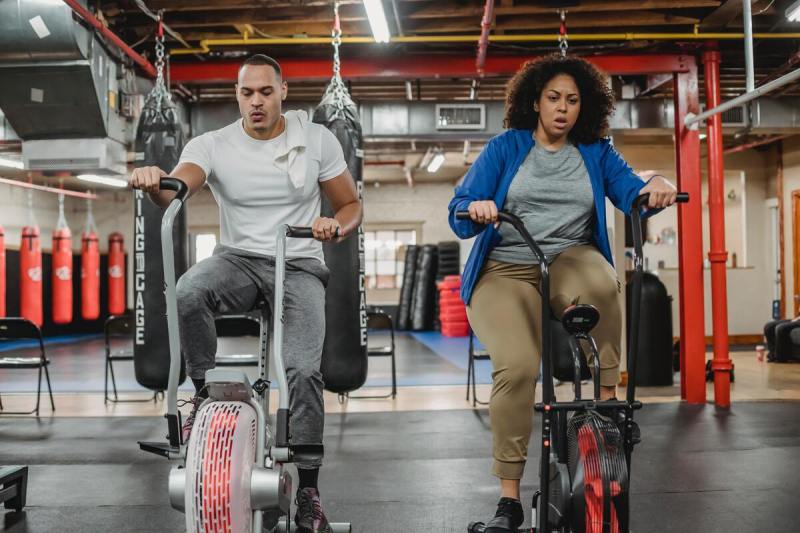Nikole Gessler vividly remembers how the CrossFit gyms referred to as “boxes” used to be. Back then, it was all dirty garages, shirtless guys, and the best CrossFit workouts that would have you praying for death before they were even over. “The first CrossFit gym I worked at had a puke bucket,” she said. “Every gym had a puke bucket. That was just part of the culture.”
But over the past decade, much of which she and her husband have owned CrossFit Recursive in Madison, Wisconsin, the culture has shifted, opening its figurative sliding doors to more people. Its well-muscled arms are now open to children and seniors, and Gessler’s gym has a vibrant LGBTQ+ population.
As such, gone are the days of the sole “RX,” or prescribed-weight workout, and now there are options abound for new members to get as vigorous a workout as the most seasoned vet equivalently, if not in actual tonnage. But what hasn’t changed is the ability of some of CrossFit’s most legendary workouts to deliver a shot in the arm to your fitness, wherever you’re at.
Gessler’s assembled a few that, regardless of the box you visit around the world, are dreaded by any member inside, including everything from back workouts to ab workouts. Others, she said, are “favorites” of hers, which is a relative term since she’ll openly admit the feeling of dread she feels before the first rep. And a final, a bonus straight Cheese Country, requires zero equipment and little space, and yet it will still give you a proper workout and leave you dreading more. So don your most comfortable workout gear and get lifting.
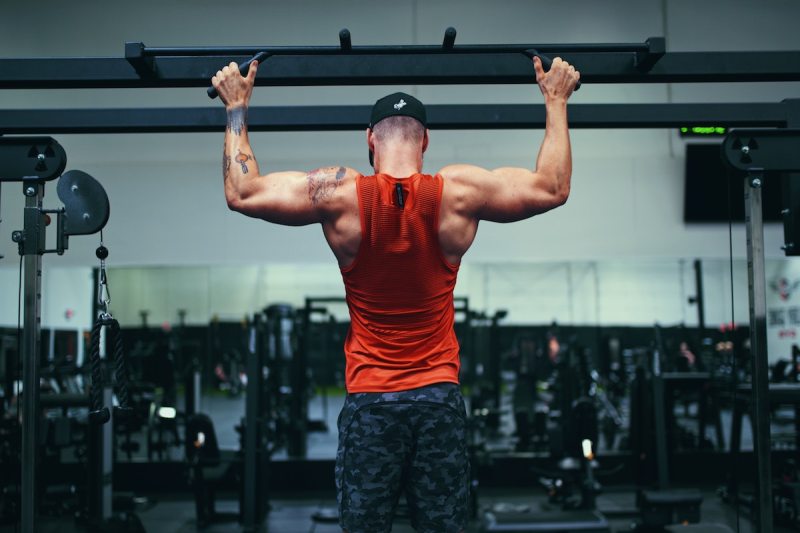
What are the benefits of CrossFit workouts?
CrossFit workouts certainly aren’t for the faint of heart, but they can benefit nearly everyone, no matter your experience with exercising or current fitness level. Because CrossFit involves both bodyweight and weighted exercises, you can adjust the workout routine to suit your needs.
If you stay consistent with CrossFit workouts, you can see some serious results. These include the following benefits:
- Increased muscle mass in your upper and lower body
- Stronger and more stable core
- Improved endurance
- Reduced risk of cardiovascular ailments
- More ease with physical everyday tasks
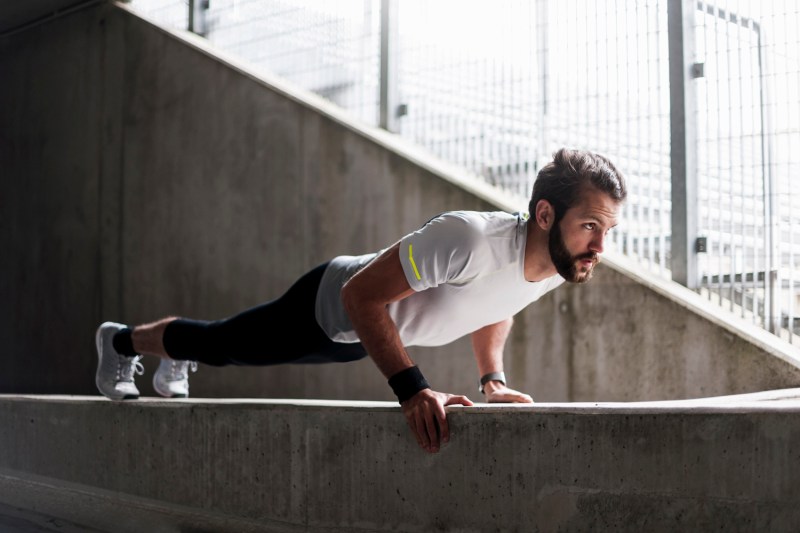
Murph
First, nomenclature: It’s Murph, not The Murph. Named after the late Navy Lieutenant Michael Murphy, who was killed in Afghanistan in 2005, it was supposedly his favorite. For most who have completed it, it’s their least, but that’s the point: “As bad as it is, at least no one’s shooting at me,” Gessler said. There are many ways to scale: partitioning, substituting exercises, and adding partners. But just like the original Coke, there’s nothing like the real thing.
- 1-mile run
- Pullups, 100 reps
- Pushups, 200 reps
- Air squats, 300 reps
- 1-mile run
Its “RX” is run continuously, only moving on from one exercise to the next after its total reps are complete. Also, you’re wearing a 20-pound vest.

DT
“It’s not as bad as Murph” is hardly a vote of confidence, but that’s Gessler’s summation. It’s one of CrossFit’s “Hero” workouts, named after the late Staff Sergeant Timothy P. Davis, USAF, who was killed in 2009 during Operation Enduring Freedom. The pain of the eponymous workout is designed to make the athlete reflect on the ultimate sacrifice. While it’s hard enough on its own, the CrossFit Games have shown a few ways of increasing the difficulty and demand, adding weight for a “heavy” version and repeating the whole thing for a particularly cruel “double” edition.
- Deadlift, 12 reps (155 pounds for men/105 pounds for women)
- Hang power cleans, nine reps
- Push jerks, six reps
Repeat for five rounds with no rest.

Fight gone bad
From the early, wild days of CrossFit, this workout takes its name from its result – the feeling you get after a bar fight you didn’t win. Sure, you have a minute rest between rounds. “That minute rest is not enough,” said Gessler, laughing.
- Wall balls, 1 minute
- Sumo deadlift high pulls, 1 minute
- Box jumps, 1 minute
- Push press, 1 minute
- Row (for calories), 1 minute
- Rest, 1 minute
Repeat for three rounds.
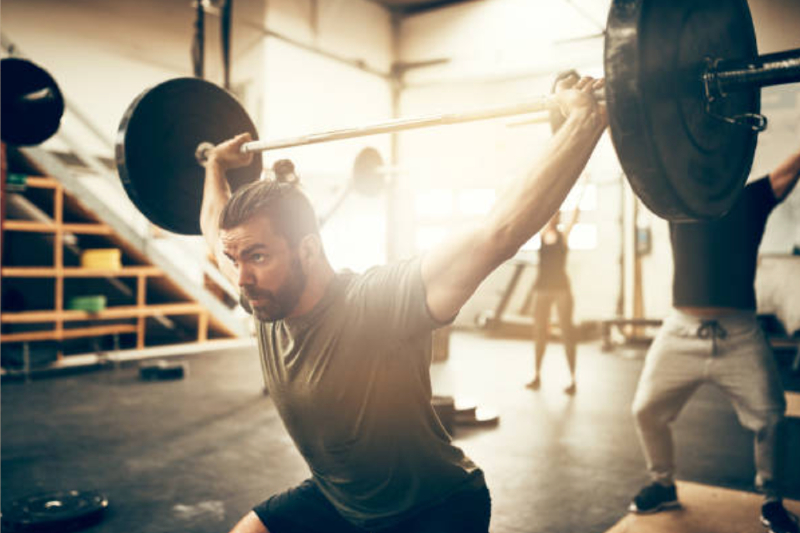
Air force
This is one of Gessler’s favorites. It’s also one that elicits a cringe before her first rep. Bigger athletes will handle the weight but get worn down by the just-enough burpees between rounds. Smaller athletes, vice versa. “You’re going to be fast at barbells or fast at burpees,” she explained, “not both.”
- Burpees, four reps
- Thrusters, 20 reps (95/65)
- Rest the remainder of the minute
- Burpees, four reps
- Sumo deadlift high pull, 20 reps
- Rest the remainder of the minute
- Burpees, four reps
- Push jerks, 20 reps
- Rest the remainder of the minute
- Burpees, four reps
- Overhead squats, 20 reps
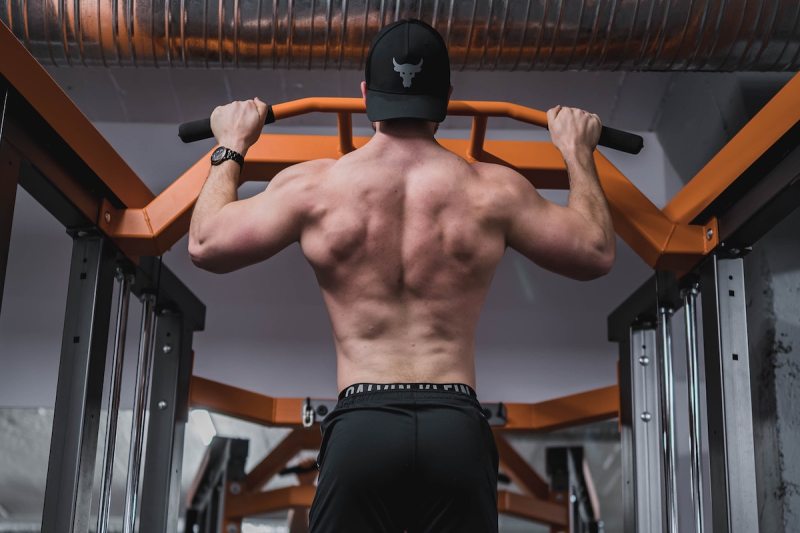
Fran
“The one that started it all,” Geller said. Fran was the first CrossFit workout to become infamous, but on paper, it doesn’t look like much. Its difficulty is in its contrasts. Bigger, more powerful men will crush the thrusters but gas out with pullups. Leaner, more athletic men will get crushed by thrusters but float over the bar. The perfect man for this sequence hasn’t yet been born.
- Thrusters, 21 reps (95/65)
- Pullups, 21 reps
- Repeat
After the first set, the reps drop to 15 for each, and then, for the final round, nine reps, with no rest between.
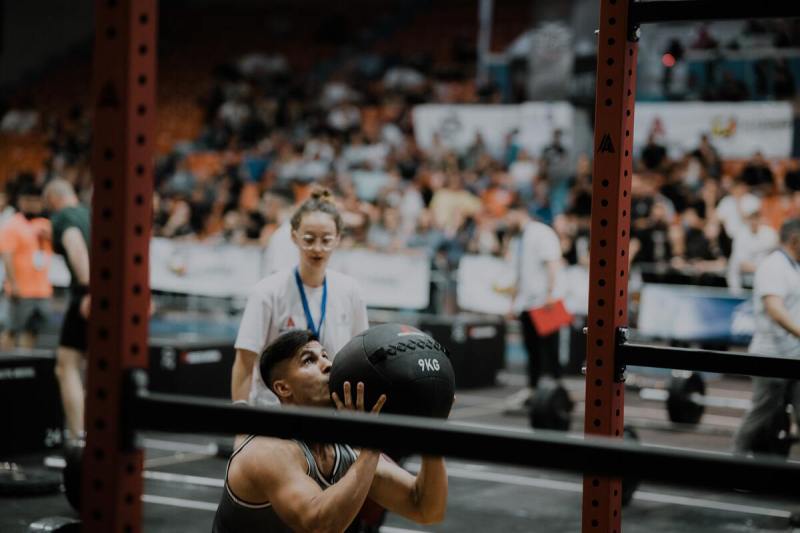
Karen
The woman’s name of 2020 graces this workout. Taller athletes, rejoice! This med-ball-centric combo becomes you. However, it’s still a chore, as it’s comprised of 150 reps. “Even if I were to ask you to eat 150 Oreos, it would suck,” Gessler explained. At arm’s distance from a wall with a 10-foot-high target.
- 150 wall balls (20/14 pounds)
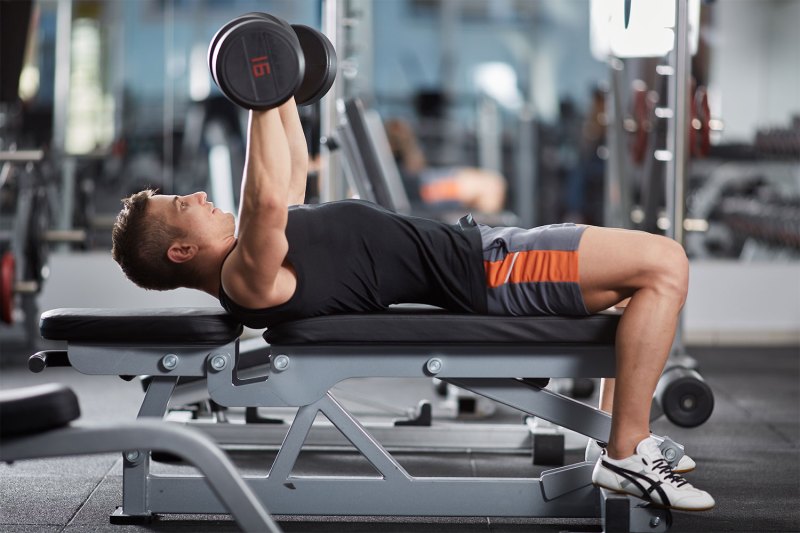
Linda
You’ll need space for this one, as you’ll set up three separate barbell weights. Midmorning weekdays and private gyms may be your best bet rather than a busy group class.
- Deadlift, 10 reps (one and one-half times your body weight)
- Bench press, 10 reps (your body weight)
- Clean, 10 reps (three-quarters of your body weight)
- Repeat
With each round, cut down one rep (the next round would be nine reps, the next eight, etc.). Repeat until zero.
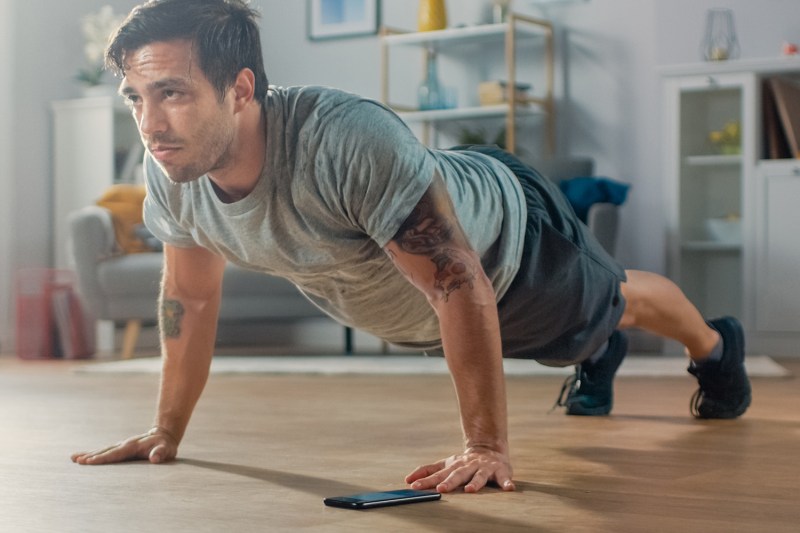
The workout that must not be named
Gessler remembers each spot in her gym where she collapsed after doing this workout. Three workouts, three spots. Still, she says, everyone can do it.
- Thrusters (95/65)
- Burpees
Complete the first set of 15 reps for each, repeat for 12 reps, and finish with nine reps. Rest for 3 minutes, then do the following:
- Thrusters (95/65)
- Burpees
Complete the first set of 12 reps for each, repeat for nine reps, and finish with six reps. Rest for 3 minutes, then do the following:
- Thrusters (95/65)
- Burpees
Complete the first set of nine reps for each, repeat for six reps, and finish with three reps.
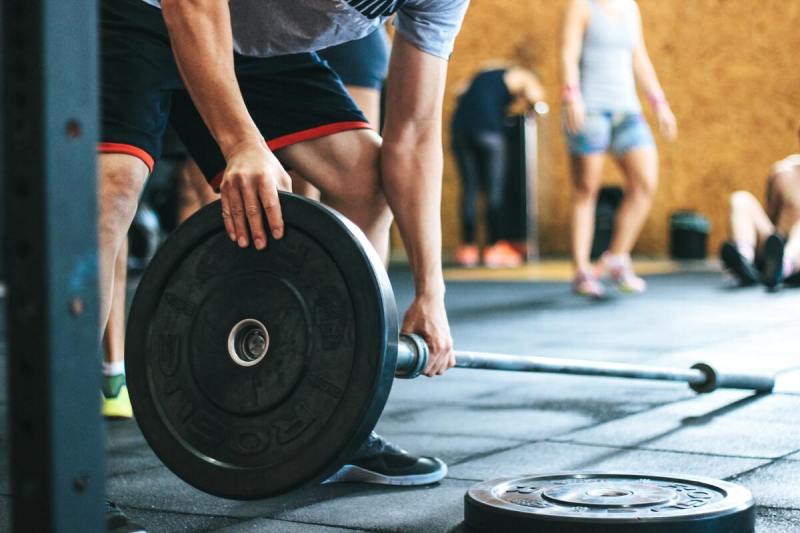
Three plates
This barbell-centric lifting series keeps the clock running. But even beyond the continuous lifting, it’s the constant stripping and reloading of the bar the Gessler says really tires you out. Take care with your form when changing weights, and if your lower back is hurting the next day, you’re doing something wrong.
- With a barbell in front of you, load three plates on each side (suggested 315/185)
- Deadlift, three reps
- Strip one plate from each side (225/135)
- Clean, four reps
- Strip one plate from each side
- Snatches, five reps (135/85)
- Strip the last plate from each side
- Overhead squat, six reps (45/35)
- Repeat
Complete four rounds.
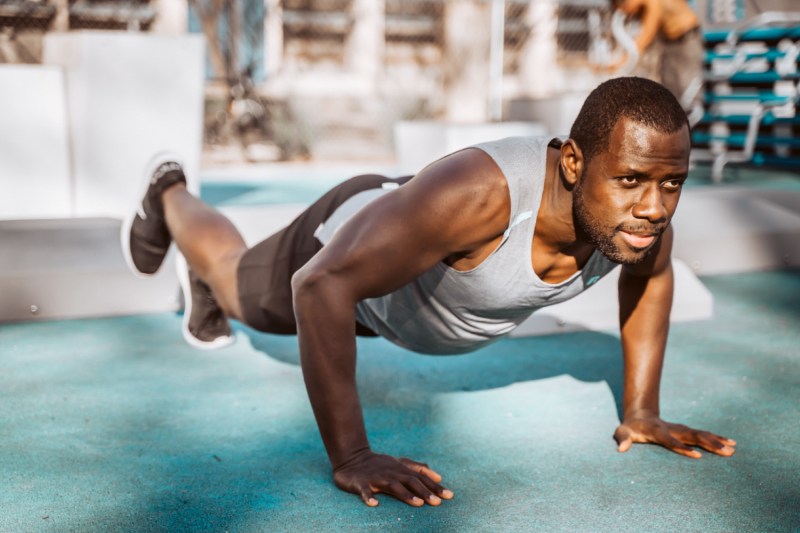
Bonus: 100 burpees
Simple. Surely 100 burpees, run for time, can’t be hard, right? Think again. What was supposed to be a laugh at Gessler’s gym in the early months of COVID quarantine turned out to be a favorite since it requires little space and zero equipment. You’ve got no excuse.
- Complete 100 burpees as fast as you can
